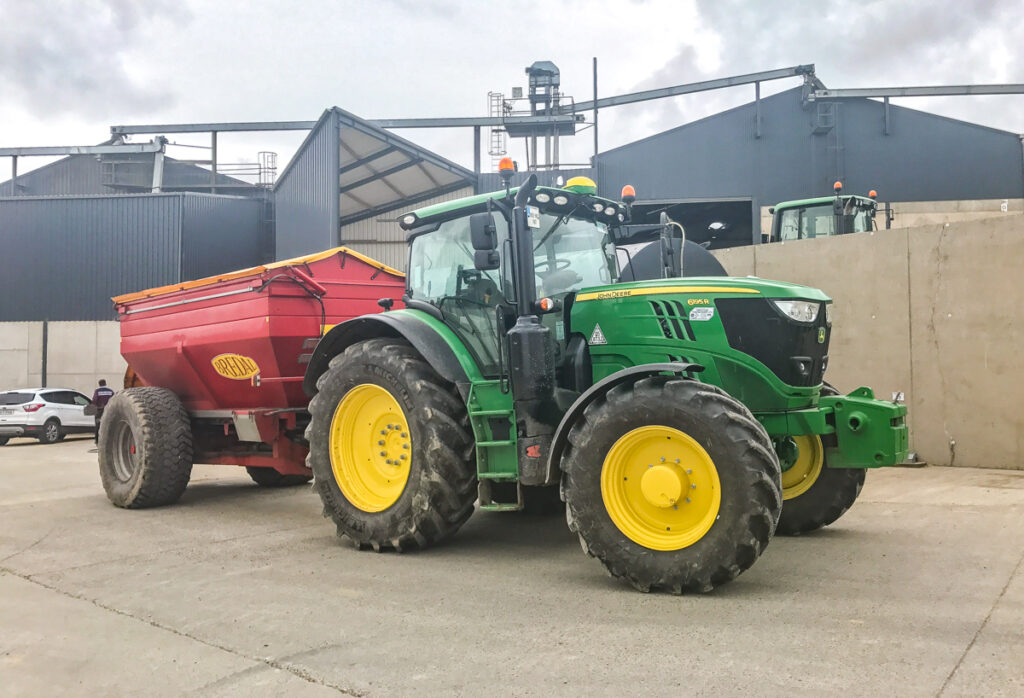John Cullen played host to a Teagasc/Goldcrop farm walk last week; the topic up for discussion was forage crops. The grain merchant – operating as John Cullen Grain – is not just promoting forage crops and selling the seed, he is practising what he preaches.
John is sowing forage crops for dairy farmers and also did this last year. The Co. Wexford man began sowing last Tuesday (July 31). Fodder rape and hybrid brassicas were the crops of choice.
“My two brothers and I are sowing Interval, Gorrilla and Redstart for farmers. Most of it will be zero-grazed and a small bit will be grazed; but most of it is being sown for dairy farmers to zero-graze.
“There’s a couple of contractors in the area who have zero-grazers. They’ve been bringing in second-cut silage this year and now they’re looking at this as an option.”
John added that most of these farmers wouldn’t usually sow winter forage crops.
“They only did it this year because they were short of forage; these are herds that have gone from 200 to 300 cows.”
Sowing and crop husbandry
John has his own machines for sowing. This instantly reduces the cost of establishing these crops.
“We’re sowing Interval between 5kg and 6kg. Firstly, we’re giving it a run of a TopDown [Vaderstad] and then a Lemken disc. We’re putting the seed out on top of that and then we’re giving it a run of the roller.
The fertiliser costs and seed costs are the biggest issue.
Sowing conditions are important
John puts a big emphasis on sowing conditions. He doesn’t plough for these crops; it’s slow and costly and he wants to conserve moisture.
“We’re running a disc on the winter stubbles. To give it a good seedbed, we do two runs. If we’re working in grass, we’ll give it three runs.
The idea of the disc or the tine machine is to try and conserve the moisture, which is very important this year. Moisture and soil conditions at sowing are so important because this seed is so small.
“We sowed the forage crops late last year and we had poor yields. The sowing date is number one, but the sowing conditions are number two and that’s really important.”
Sowing date
Time is ticking for sowing crops like Westerwolds ryegrass; especially because there is a 10-day wait for seed, which will delay sowing further.
John isn’t sowing this crop as a result. When these ryegrass crops are sown into August, the potential yield will not be achieved.
“If we don’t get that seed in the next week, it will be a high cost going forward. If the weather comes bad and we don’t get the number of bales we’re expecting, there will be disappoint for both supplier and customer. If you’re aiming for an average of one-to-two bales per acre, it’s a high risk.”
John stated that forage crops need to be in by August 10 to achieve high yields. He added: “After August 10, you’re slipping back in yield every few days.”
Rotation
John explained that the forage crops are fitting well into his rotation.
“Most of the guys that have the land available now are going into cereals, so they will be trying to put in a spring cereal after this crop.
“We’re putting it in after winter barley and it will end up in spring barley because it’s not going to be cleared for winter crops.
Maybe if some of it is gone by early-November, we’ll go in with a winter crop; but we’ll see how it will pan out.
John has oilseed rape in his rotation and he isn’t worried about weed problems in the future.
“The ground we’re sowing in is one year away from oilseed rape, but it’s only going to be short term. It’s not going to have a long growing period to go to seed.”





